Garrett Kurtt - Building Code Information by Jurisdiction – New Technology - PODCAST TRANSCRIPTION
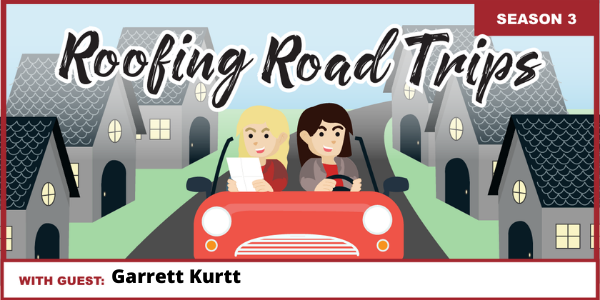
Editor's note: The following is the transcript of an live interview with Garrett Kurtt, CEO and Founder of OneClick Code. You can read the interview below or listen to the podcast.
Speaker 1:
Welcome to Roofing Road Trips with Heidi. Explore the roofing industry through the eyes of a longterm professional within the trade. Listen for insights, interviews, and exciting news in the roofing industry today.
Heidi Ellsworth:
Hello, and welcome to another Roofing Road Trips. This is Heidi Ellsworth with Roofers Coffee Shop and I am here today, road tripping virtually to Denver, Colorado, one of my favorite places, and with some amazing new technology, and the founders and marketing minds behind this new technology. I'm here today with Garrett Kurtt, CEO and founder of OneClick Code and Jessi West Gunteski, the marketing director, NPR for OneClick Code. And I have to tell you, these are really, really cool folks. So Jessi, Garrett, welcome to the show.
Garrett Kurtt:
Thanks for having us, Heidi.
Jessi West Gunteski:
Thanks... Yeah, thanks for having us, Heidi. We're excited to be here.
Heidi Ellsworth:
Well, it's really fun. We've had to do all these virtual road trips because we haven't been able to see each other in person. But I just found out, talking to Jessi, we will see each other at IRE, so that's going to be pretty exciting. And I have to say, virtually road tripping to Denver, Colorado was always one of my favorite, because that's where Megan Ellsworth, our podcast producer, lives also. So, Denver is a pretty... You guys got a lot of nice folks up there. I'm kind of curious, and Garrett, I would love for you to start, just tell us your story. Tell us your story about how you got into One Click Code, how you came up with the idea, just the whole picture.
Garrett Kurtt:
Sure. Yeah. Well, thanks again for having us. I know it's virtual, but we look forward to seeing you soon. And my background has been in the business for the last 13 years. One Click is born out of me working within the insurance industry. I started out as something... as more of, I stumbled into the industry. I started off power washing and helping floods that were hit by my grandparents in Iowa, which flood work is not great. It's dirty. It's short-term. And then I thought, "Hey, there's a hurricane that hit down in Houston, Texas." And I thought I could go down there and clean up basements. Turns out, there're no basements in Texas. So all be said, I was always trying to make money. I found that there was money to be made, and I found myself on roofs instead of in the basements, when I get down to Texas.
And then after that, it was inspiring to see all these roofing companies pop up and to be able to build basically, fortunes off of this, I decided that it was probably a good idea for me to start my own company. I'm an entrepreneur, so I did. Now, I didn't start it in Texas. There was a hail storm that hit Colorado back in 2009 in the summer. And at that point, I realized that I'm going to Colorado, not just to enjoy the sunshine, but to also start a business.
So as I was there... I've been here for like 12 years now, I [inaudible 00:02:55] say 12, 11 years. Yeah, 11 years. And through process, I've done thousands of rough estimates. I've also become pretty well-known in the industry here, local, the local market with doing appraisal work, as well as doing supplemental estimates on commercial projects. I have right now, probably over 500 appraisals under my belt. And I've even been called into, as an expert witness, on insurance claim disputes here in Colorado.
Heidi Ellsworth:
Wow. That's really interesting. I mean, I can see how all of that really led to kind of seeing what the pain points and the needs were in the roofing industry. And I'm starting to see the formation of One Click Code Here.
Garrett Kurtt:
Yeah.
Heidi Ellsworth:
But let's have Jessi... Jessi, if you could also introduce yourself and how you got involved with OneClick Code, that would be awesome.
Jessi West Gunteski:
Yeah. Thank you so much, Heidi. I'm so excited to be here. I love talking about OneClick Code. It's been a passion of mine since I joined the team about a year and a half ago. I'm the director of marketing and PR over here. And I came from the wedding planning industry. I had no connection to roofing or insurance. I just got headhunted for the position. Garrett and I became pretty close and I joined the team. So, I am excited to be here, but roofing is relatively new to me. So, Garrett has been a great mentor and understanding the industry, since he has seen all sides of it.
Heidi Ellsworth:
Well, you're pretty safe because really no one plans on getting into roofing. Maybe-
Garrett Kurtt:
That's the truth.
Heidi Ellsworth:
If you grew up in it but...
Jessi West Gunteski:
True.
Heidi Ellsworth:
So, you know what, Garrett, kind of go... let's go back then, to when you were really coming up with the idea of OneClick Code. How did that all happen?
Garrett Kurtt:
Well, it really came down to working, probably at the time, it was about seven years in the business. And I was working on thousands of roof claims, whether it was... I was pretty much involved with every claim in my company. So, I was either on the supplementing side, production side. I kind of... I wore all the hats. I loved working 14 hour days. It didn't really... It's worked out in the long run, but that's where it really all started.
So from that though, I realized I was doing things over and over again. I'm a systems guy. How can we automate? How can we put the process in place that we don't have to continue explaining what a roof should cost and using Xactimate? We use Xactimate because it helps us identify pricing. But it gets really annoying, and it's not a very great technology, but it does give you pricing.
So I'm like, "How can we automate this?" And every time I tried to automate it, every time I automate in Colorado, I always had to stop and think, "Well, is drip edge required? Is ice and water shield required? Do we have to do ventilation? All these building code requirements came up, every single time I got to the point of automation. And I realized that if whoever can figure out how to do that, would be on their way to be able to help with the estimation process. And so I set out probably four years ago, to figure out the building codes to help contractors across the country, not just here in Colorado, identify what should be done on a roof or what should be included on a roof.
Heidi Ellsworth:
Wow. So cool. As you and I have talked about before, and my background being EagleView, I really have this excitement that you feel when you have that startup, you have this idea, and you're able to gather that information together. But it all starts with the pain, right?
Garrett Kurtt:
Mm-hmm (affirmative).
Heidi Ellsworth:
What's the pain?
Garrett Kurtt:
Yeah.
Heidi Ellsworth:
The pain is measuring the roof. The pain is whatever it is. So Jessi, maybe you can share a little bit. Off of what Garrett just said, what is that pain that really OneClick Code is solving and taking away?
Jessi West Gunteski:
Yeah. Well, there are so many nuances to this question because there are contractors, there're adjusters, there're manufacturers, there's lots of different pain points from all different aspects. But what it really boils down to is, everyone finding the right information and then documenting that information. So, contractors needing to find out what the building codes are. In order to do that, they have to figure out the right jurisdiction. And in order to then get the claim closed, they have to document that information.
And so, we're seeing all of these different groups of people who are being stuck by these manual and outdated systems, because they're either gathering inaccurate information or they're gathering information and they can't back it up. And so, that was the main pain point that we are really trying to solve with OneClick Code. By compiling all of the building codes and jurisdiction data from across the U.S., we're really saving people massive amounts of time. So when you get on a roof, we can save you an hour because you're not calling the municipality. you're not emailing them back and forth. You're not battling over with the adjuster over who's right.
And then we're also seeing that OneClick Code is eliminating friction between the parties. So, the contractors and adjusters are no longer arguing over who has the right information, because when both parties have the accurate information, one of them can't be right, and one of them can't be wrong. So, we're seeing a really great comradery between that. And we're seeing that contractors who use it on the roof, then they pass the app to the adjuster, who then passes it to another contractor. So, that's been a really beautiful part of building this program for the industry.
And then on the insurance side, we're really trying to help people close their claims quickly and accurately. From an insurance standpoint, it really has been helpful for them to see how quickly all of this can be resolved.
Heidi Ellsworth:
Right. Well... And you know with the crazy weather, I mean, the hail storms, the extreme heat, now the hurricanes, you already have tropical storms coming on, it's just so important to be able to get a homeowner or a building owner to get their home safe again. And contractors, this kind of support, knowing the building codes and understanding the specifications and requirements, wow. That has to make it just-
Jessi West Gunteski:
Yeah. Well,
Heidi Ellsworth:
... go a lot faster.
Jessi West Gunteski:
At the end of the day, what we're trying to do, is just serve our customers. Right? Serve the homeowners. Get them back in their houses, get their leaks fixed, to get the roofs repaired, especially after a big catastrophic event. So as long as we can help customers get back in their homes quickly, that's the end goal.
Heidi Ellsworth:
That's great. That is so cool. So, okay. So Garrett, I'm going to go back again, because I'm just so I'm interested in kind of fascinated with this. But you saw the idea, you knew what you wanted, you knew what they needed. And then, how did you go about curating all of this information, not just between building codes, but with manufacturers and everybody else involved?
Garrett Kurtt:
It's been a process. So, I went out and researched say... [inaudible 00:10:02] When I came up with the idea like, "Hey, we need building codes.", then I started researching, who has building codes? And sure enough, the only people that had building codes were the local municipalities. So then I started saying, "Well, who's the Zillow of local municipalities?" And no one's really done that. So I'm like, "Okay. So in order for us this problem will be solved, we need to go out and figure out these building codes for the 30,000 plus municipalities across the country."
So we set out three and a half years ago with not much direction, other than we need to figure out the building codes. But in that course of time, we've built relationships with those municipalities, where we become a first-name basis with them. Or if you call in to the cities and counties, they will refer to our application to answer their commonly asked questions about building codes, because we have their documentation for them.
We have a lot of process in place though, to monitor all of those 30,000 cities and counties, some of which have adopted codes. I'm sorry, many of which have adopted codes, but some of which have not. So we're always checking to see, have they adopted new codes? If they didn't adopt codes, do they adopt codes now? And then, when they do adopt the codes and they update, how do we maintain that database? So that's been a big struggle for us, but we've come a long way. And we finally were able to conquer that challenge about a year and a half ago.
Oddly enough, the conversation came from EagleView. They said, "If you can become nationwide, you will become very relevant to all contractors and insurance companies. And if insurance companies like it, contractors will like it. And if they both like it, it will be a solution that will hopefully change the industry." And that's what we set out to do.
Heidi Ellsworth:
And that's what you're doing.
Garrett Kurtt:
Yeah.
Heidi Ellsworth:
It all came together.
Garrett Kurtt:
It did.
Heidi Ellsworth:
Yeah. It's-
Garrett Kurtt:
It's been a great journey and I'm excited for more years to come. So...
Heidi Ellsworth:
Yeah. Well, when you solve a problem like that, it's just such a huge difference for roofing companies, and for them servicing customers. But I do have a question on... So you talk a lot about jurisdiction... Sorry, I mean to say that, jurisdiction matters and how contractors can remove the friction. And Jessi mentioned that a little bit, between the adjusters and the contractors, manufacturers, insurance companies, homeowners, building owners, there's just so much. So, how is that working? What are you seeing? Can you give us some examples of contractors who are actually experiencing this, Garrett?
Garrett Kurtt:
Well, I'm one of the contractors that experienced it over and over again. But the contractors that's out there right now, is working in a city. And this [inaudible 00:12:33] a good example, but does require a drip edge. Right? I'm sorry, they're working on an address that says the city name that does not require the address, but it's actually in the county where it does. And so what happens is, is because of the name and the address, they're associating automatically because there's the address city. That city is associated with a building code. And a lot of times, it's not actually in that city. It's in the county, but the county controls that area or defaults to a village or a township or a borough or whatever it may be. And the jurisdiction actually identifies, regardless of what the city name is in the address, it identifies who has jurisdiction over that house.
And that was a huge piece of the puzzle that no one had figured out that we had to do, so that it's address-specific jurisdiction and building codes. Because the insurance company will say, "Well, great. Are they enforcing that code on that house?" And the answer is, "Well, we don't have anything to support that. All we have is a piece of paper that says the city is adopted." But is it related to that house? We're going all the way from the municipality down to address-specific building codes.
Heidi Ellsworth:
Wow. And that makes it... When you think about how far technology has come, I mean, even honestly, even since I started with... about the same time that you were getting into roofing, is when I started with EagleView, about 2009. And when you really look at that and think about how the contractors can now use CRMs, use project management, bring all this information in, and really be able to get it address-specific, because you're right. I mean, as I was looking at a lot of your information, I just find it so fascinating. And you could have a house that the city thinks is in theirs, and the county thinks is in there, and the borough or whatever it might be, it changes.
Heidi Ellsworth:
And so-
Jessi West Gunteski:
Yeah.
Heidi Ellsworth:
... how are contractors... And maybe, Jessi, I'll throw this your way, but how are contractors incorporating this into their business? What are you kind of seeing that way?
Jessi West Gunteski:
Yeah. Well, I'll kind of tie this back into the question above, because we say that, what Garrett was talking about in terms of the postal address, I mean, you can look at a house that's an Inglewood, it has a zip code that's in Inglewood, but it's actually in Arapahoe County. So, getting the jurisdiction can be really confusing, if you're using zip codes, if you're using the postal address. And so, we're seeing that 40 to 50% of houses across the U.S. are actually being mis-assigned. And, because of that, if you're miss assigning a house, then you're getting all of the information wrong. So you're getting the sales tax wrong. You're getting all of the code enforcement line items wrong, so your estimates can be off by 25%. And the ways that contractors are incorporating this in their business is, they're actually using OneClick Code to get paid what they deserve. Right? So if they get the jurisdiction right, they're getting the sales tax right, they're getting all the line items that they deserve to be paid for, paid for.
And what's beautiful about OneClick Code too is, we're trying to make it accessible to everybody. So we have a web application, just go to oneclickcode.com. We also have it available on iOS and Android. And then, I see it as... I like to tell people that it's the first app that they should use when they get on a roof, because jurisdiction and building codes are the building blocks of an estimate. If you get those things wrong, then your estimate is going to be wrong. So, I always tell people, "Pull out your OneClick Code app right when you get on a roof. Make sure you have the jurisdiction and everything else right, and then you're good to go." So, yeah. That's-
Heidi Ellsworth:
Yeah.
Jessi West Gunteski:
... how we [crosstalk 00:16:27] using it.
Heidi Ellsworth:
See, I love it when you... And Garrett, you talked about this earlier in our podcast, is really putting processes in place, processes that make every cell, every job, every insurance claim, everything go smooth for your company. So you can do more, you can be more profitable. And this makes sense that, as soon as you hit that job or even before maybe you go out, you figure out-
Jessi West Gunteski:
Yeah.
Heidi Ellsworth:
... what the jurisdiction is using OneClick Code. And you can really start putting things together quickly for the homeowners and taking care of them.
Garrett Kurtt:
Absolutely. Yeah. It's on the... So there's... We can use our app in different spots or the reports in different levels of the actual sales process, all the way, the supplementing process. So sales enablement, being able to have this report in the hands of a salesperson, being able to provide that value, not just to the sales person, but showing to the homeowner, "Hey, we follow building codes. It separates us from our competition because of these are the things that we abide by. And we have high... We have a high rating. We take pride in workmanship or craftsmanship, and therefore, we follow the building codes. And here's a report to show how we do it. That goes a long way.
And then you have production. That same report can be used to help identify, where do we pull a permit? What materials are going to be used? Do we have to use drip edge? We have to use [inaudible 00:17:48]. So it helps miss... It eliminates the risk of over-ordering or under ordering and having changed orders midstream of doing a job. That same report goes even further on a simple mental process, is here's all the things that were missed on the original estimate by the insurance company. But we need documentation to provide on why it should be added. Here's a shortcut from a third-party verification that shows what should be done and why.
Heidi Ellsworth:
That makes total sense to me. And I just... We have talked about this so much, in everything that we've done, but that technology is a differentiator for the contractors, that this isn't something they should just have in operations. It's something they should use in their marketing. Jessi, are you seeing that, where they are telling homeowners, "This is what we use. This is our technology that makes it so great." What a great differentiator for a contractor.
Jessi West Gunteski:
Absolutely. I think it's the factor of, are you good at your job, are you great at your job? What are you providing? It's adding value to the customer. It's adding value to the homeowner or the property owner, because not only are they understanding that you're following things by the book, you're doing things legally, but also you're adding value to them. Now they know what jurisdiction they're in. They know what sales tax they're in. Even that element can be beneficial to them. So, I really do think it's a great marketing tactic for a lot of companies to utilize technology. I mean, we're not in the Dark Ages anymore.
Heidi Ellsworth:
No. No.
Jessi West Gunteski:
No.
Heidi Ellsworth:
I tell you what, the last year and a half is taken care of that. Everybody's able to use technology, I think, now. They have to. There's no way to get around it. But I really do... As we look at this and we look at all the different technologies out there, being able to show that kind of report to a homeowner, really establishing your expertness in the industry. And also just the time savings. I mean, how many times have I heard contractors like, "I got to drive to city hall. I've got to go here. I've got to go there. I got to try to figure this out. I can't get anybody on the phone.", especially during COVID. So, this really takes all of that away.
Jessi West Gunteski:
Yep.
Garrett Kurtt:
Sure does.
Heidi Ellsworth:
So, okay. I'm a little curious. I'm a little curious, Garrett, but what do you see next? What's like you... You got the building codes, you've got the specifications, you're working with manufacturers. What do you see as kind of the next big thing?
Garrett Kurtt:
Well, we see the next big thing is, going to be calculators. So, we're looking at four different calculators. And this is going to be tools that help the contractor estimate the jobs better. They're going to be calculators that are going to help identify materials that need to be on the job. So it's basically, overall, how can we help calculations that are being done?
And so our first one is, the ice and water shield calculation. Now some websites have done it, they just don't do very well. And so, we're looking at it from two sides. The estimation side, so we need to prove to the insurance industry, how much ice and water shield's required, less the felts. Right? So you have to subtract felt, but it's not just one-to-one. We know that. There're waste factors and all kinds of things. What is the true ice and water shield calculation, with the reduction of felt. With one... Is it going... Is it by inch? Is it by six... Is it going to be by one and a half courses or two courses? For those viewers out there, you guys know what I'm talking about.
And then the next calculation, is the ventilation calculation. Now, not just calculating based on GAF for Owens Corning, because they want to sell you vents. There's existing vent in the house, there is ridge vent and then there's gable vents. So with those calculations, based on the attic square footage and the pitch of the roof and et cetera, et cetera, what additional ridge vent do you need? Or what additional events do you need that are currently on there? And we're going to help calculate that for the supplemental process as well.
Heidi Ellsworth:
Wow.
Garrett Kurtt:
So, we have... Yeah. So ventilation and then we have a waste calculator. So, I know there's a lot of waste, just general, on what do you should order for, not just ridges, because ridges is not... Ridge and hip is not what I'm talking about. But the actual shingle, it's going to be a waste calculator for a shingle. So it tells you exactly, based on the measurements of the roof, the number of [inaudible 00:21:54], the linear feet of valleys, rigs, step flashing, et cetera, help calculate what you should be putting on for a waste factor in ordering as well. So we're going to help with ordering, as well as estimation.
Heidi Ellsworth:
That's great. That's great, especially when you combine that with knowing what's required in that jurisdiction.
Garrett Kurtt:
Yeah.
Heidi Ellsworth:
Because that's the part I think, in a lot of calculators or even a lot that doesn't get put in, and then you're like, "Oh, we had to do this? I didn't know that." And so...
Garrett Kurtt:
Well, a calculator for me is like a game. Right? So if you think of Xactimate is kind of it's gamification, like you add a line item, you put a quantity, and you get your price at the end. If you think about these calculators, you're basically collecting the data to help justify what your cost of your estimate is going to be. And also profitability. So it actually can be gamified in a way that it could get anyone excited about, "Hey, if I can do this really quickly and it creates a report so that I get paid, oh my gosh, lifesaving." Not life saving, but it's game-changing and time-saving.
Heidi Ellsworth:
Yes. Yes. Especially... And I'm sure the insurance companies... What I always saw too, is that, insurance companies just want a number, man. They want it to be right, I mean, they want to be accurate, and they want everybody to agree on it, because they don't want to have things sticking out there either or hanging on later. So, very cool. So, okay. How can contractors... Jessi, I'm going to go to you. I'm a contractor, I want to start using OneClick Code. What do they do?
Jessi West Gunteski:
Yeah, absolutely. So we offer currently, a 14-day free trial. We want people to try it out, see all the benefits of it. And they can sign up at oneclickcode.com, or you can find us on the app store or Google play for iOS or Android, and just type in, OneClick Code.
Heidi Ellsworth:
That is awesome. And I will tell everybody there listening, you can also find them... OneClick Code has a full directory on Roofer's Coffee Shop. We have all of their information, buy online, promos and rebates, all this great stuff that they're doing all for you. And you can find them very easily. So if for any reason, you're looking and you want to just get a little bit more information, do a little bit more research, they've shared some amazing articles. And really are talking about this new technology and where contractors can go with it, and how important that jurisdiction is.
Heidi Ellsworth:
I love it. I love this kind of technology. I'm so excited for you. I know you're just like skyrocketing. Garrett, anything else you'd like everybody to know?
Garrett Kurtt:
Well, there are some integrations coming soon for some big-
Heidi Ellsworth:
Ooh.
Garrett Kurtt:
... names that you will all recognize. Can't release them yet, but they're in the works, so that our data will flow naturally into their CRMs, as well as their job folders. So, that's something that's coming down the pipe. We don't have exact dates yet, and we're still working on the details.
Heidi Ellsworth:
Yeah. Talk about game changing. Everybody-
Garrett Kurtt:
Yeah.
Heidi Ellsworth:
... better be watching for that. That's great. Wow. Jessi, any last thoughts?
Jessi West Gunteski:
I don't think so. I think it's just great to be on your platform and I'm just so grateful for you allowing us to talk about it.
Heidi Ellsworth:
I love it. I love it. And what's so exciting is, Garrett, you and I... you were on part of Roofer's Coffee Shop when you first started. You're on Roofer's Coffee Shop now, as you're just taking off to that whole next level. We're so happy to have you and to have you all be a part of this community.
For everybody out there listening, I'm telling you, this is a technology... You need to just go to your app right now and look it up, because it's pretty cool. And I know that if you just put your address in, you'll start seeing some reports come through. It's so easy. I've done it. I checked out my own house. So...
Garrett Kurtt:
Everyone does.
Heidi Ellsworth:
Everyone does.
Garrett Kurtt:
That's the first thing everyone does, is checks out their own house.
Jessi West Gunteski:
Yep.
Heidi Ellsworth:
That's right. That's right. So, okay. Well, both of you, Jessi and Garrett, thank you so much for being on this Roofing Road Trip. I am really excited to watch where you go and we'll have you back to hear how it's all happening.
Garrett Kurtt:
Thank you.
Jessi West Gunteski:
All right. Thanks, Heidi.
Heidi Ellsworth:
Good. Thank you.
Garrett Kurtt:
See you, Heidi.
Heidi Ellsworth:
And thank you all for listening. This is a Roofing Road Trip. You can find us on Roofer's Coffee Shop under the Read, Listen, Watch section of the website. Find all of our roofing Road Trip podcasts. We do them every week. You're going to see them all the time out there. And please subscribe to us on your favorite podcast channel. You don't want to miss a single one because we're getting all the insights from the roofing industry that you need to grow your business. Have a great day, and we'll see you on the next Road Trip.
Speaker 1:
Make sure to subscribe to our channel and leave a review. Thanks for listening. This has been Roofing Road Trips with Heidi from the rooferscoffeeshop.com.













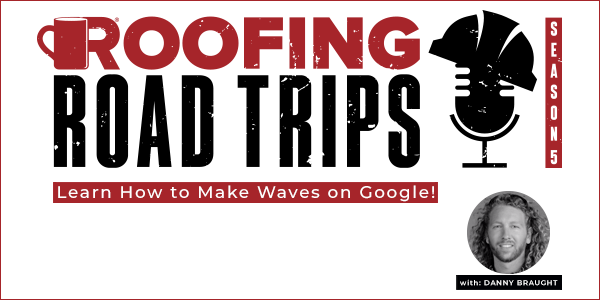

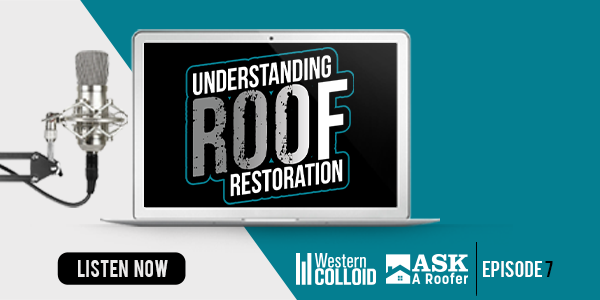

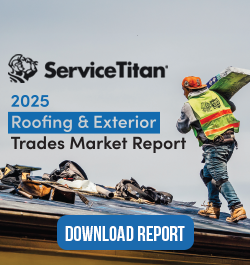
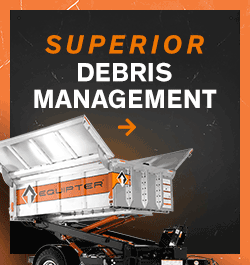


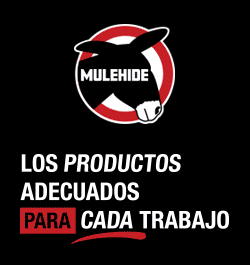
Comments
Leave a Reply
Have an account? Login to leave a comment!
Sign In